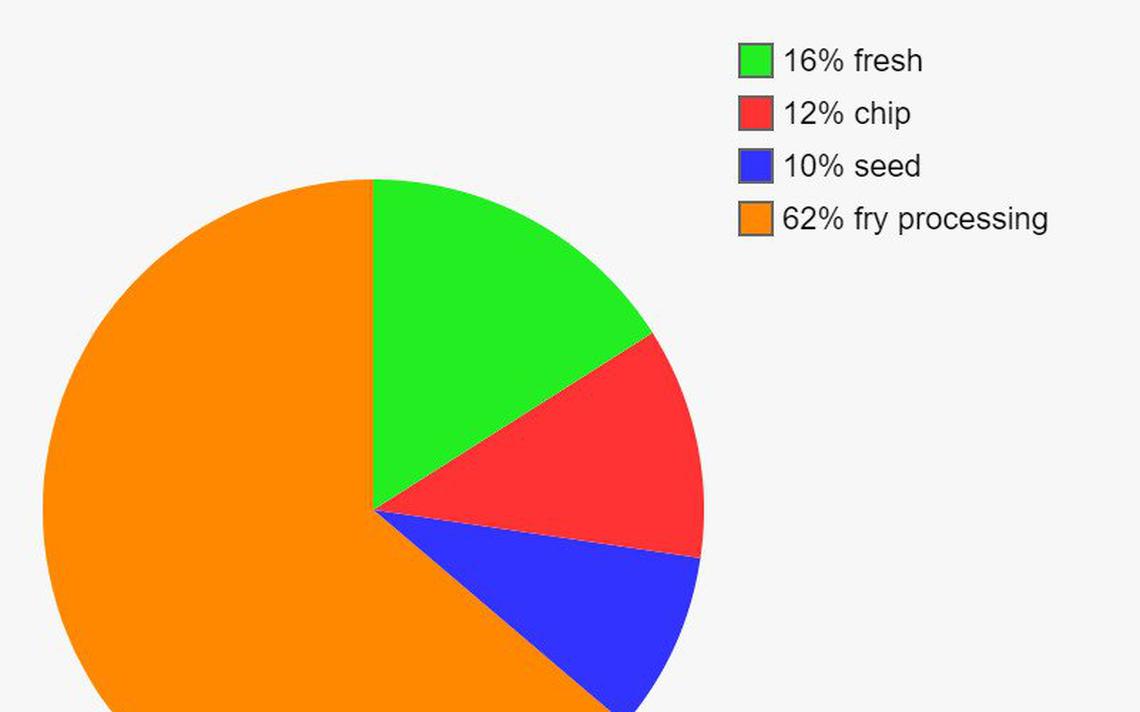A historically wet fall resulted in fields too muddy to harvest; as a result, tens of thousands of acres of grain and row crops were abandoned in northeast North Dakota and northwest Minnesota. Meanwhile, freezing temperatures destroyed more than a combined 100,000 acres of sugar beets and potatoes in the Red River Valley.
The combination of the loss of both sugar beets and potatoes will be an especially hard hit, said Donavon Johnson, Northern Plains Potato Growers president.
“When you have two crops in the same year struggling, that’s when you have trickle-down,” Johnson said. “It’s a trickle-down effect that will happen in rural areas, whether it’s restaurants, vehicles, equipment. I had a trucker who came in .... He said ‘I haul potatoes. I don’t have any to haul.’”
Meanwhile, some wash plant workers and packers in the potato industry are seeing their hours cut because their employers have reduced the number of days they’re doing business, said Ted Kreis, Northern Plains Potato Growers marketing director.
Besides obvious sectors, such as transportation and labor, the food industry, local banks, power companies and hospitals also will feel the effects of a reduction in farm revenue, said David Flynn, chair of the University of North Dakota’s Department of Economics and Finance.

Northern Plains potato production will be challenged this year as many acres remain unharvested. Here is what happens to a potato in this region once collected from the fields. Source: Northern Plains Potato Growers Association.
GRAPHIC: Kimberly Wynn / Grand Forks Herald
The Red River Valley sugarbeet crop was another major crop hit hard by freeze damage. Nearly 118,000 of the 390,000 acres of sugarbeets American Crystal Sugar Co.’s shareholders planted this spring were destroyed in early November when temperatures dropped into the teens.
Sugarbeet growers in Minnesota and North Dakota left 3.5 million tons, or 34 percent, of their crop in the field this fall. Last month, sugarbeet farmers said they will be paid $37 per ton for the crop, which is about $14 per ton less than the 2019 payment. Not only will they be paid less, but some sugarbeet farmers also will have to pay back American Crystal Sugar Co. $343 for each acre they couldn’t harvest.
The economy of Grand Forks and other cities and towns likely will feel the effect of sugarbeet producers’ revenue reduction.
“For (each) million-dollar loss in sugarbeets in the local economy, you’re talking about something like a million and a half loss overall,” Flynn said.
Many North Dakota wheat farmers also have taken a financial hit as a result of wet weather that damaged crop quality and resulted in abandoned acres. Nearly 1 million of the 7.5 million hard red spring wheat acres North Dakota farmers planted this spring were not harvested, the North Dakota Wheat Commission said. Total North Dakota 2019 spring wheat wheat production was 291.5 million bushels, 26.5 million bushels fewer than 2018 production.
Between discounts for quality and for falling numbers, revenue loss to North Dakota wheat farmers could amount to more than $150 million, said Jim Peterson, North Dakota Wheat Commission marketing director.
The wet fall also took a toll on dry edible beans. Tens of thousands of North Dakota dry edible bean acres were damaged or destroyed by heavy rains, snow and flooding this fall. In Grand Forks County alone, 42,565 acres were damaged and 28,377 of the acres were destroyed as of Nov. 1, according to the Oct. 31 North Dakota Emergency Board Damage report.
Nelson, Ramsey, Steele, Traill, Walsh and Ramsey counties, meanwhile, had combined losses totaling nearly $27 million, the report said. Cavalier County’s corn crop also had a $1.8 million loss.
The damage report included only per-county crop losses that exceeded 30 percent. Some of the counties had multiple crop losses that were less than 30 percent, so they weren’t recorded.
So far, of course, estimates of the economic impact of the loss of farm revenue are preliminary. The full effect won’t be known until farmers learn how much of their losses will be covered by crop insurance and how much federal disaster aid they might receive.
What is clear now is that 2020, at best, is shaping up to be another challenging year for farmers. With little fall work done and fields saturated before freeze-up, they’re hoping it won’t be a battle next spring getting crops in similar to getting them out this fall.